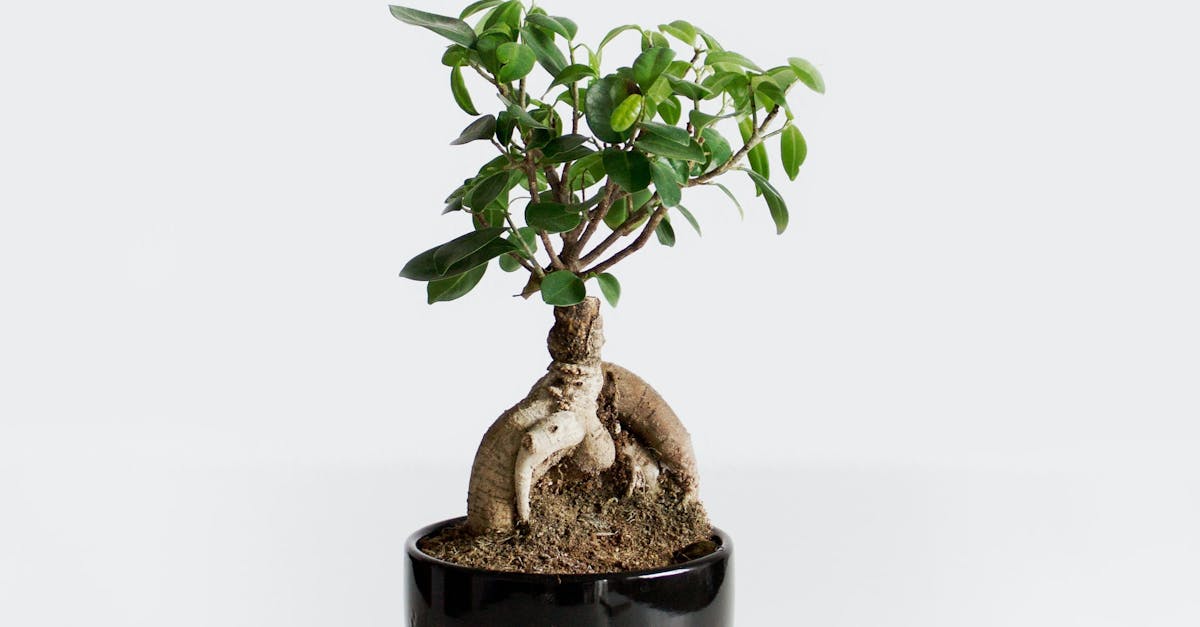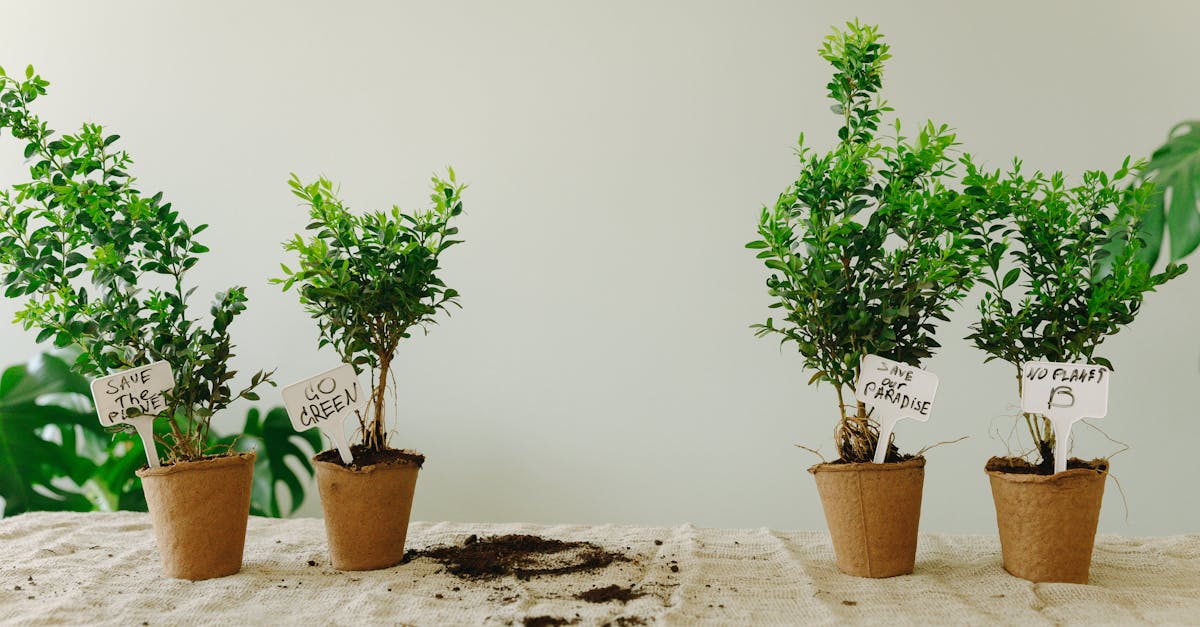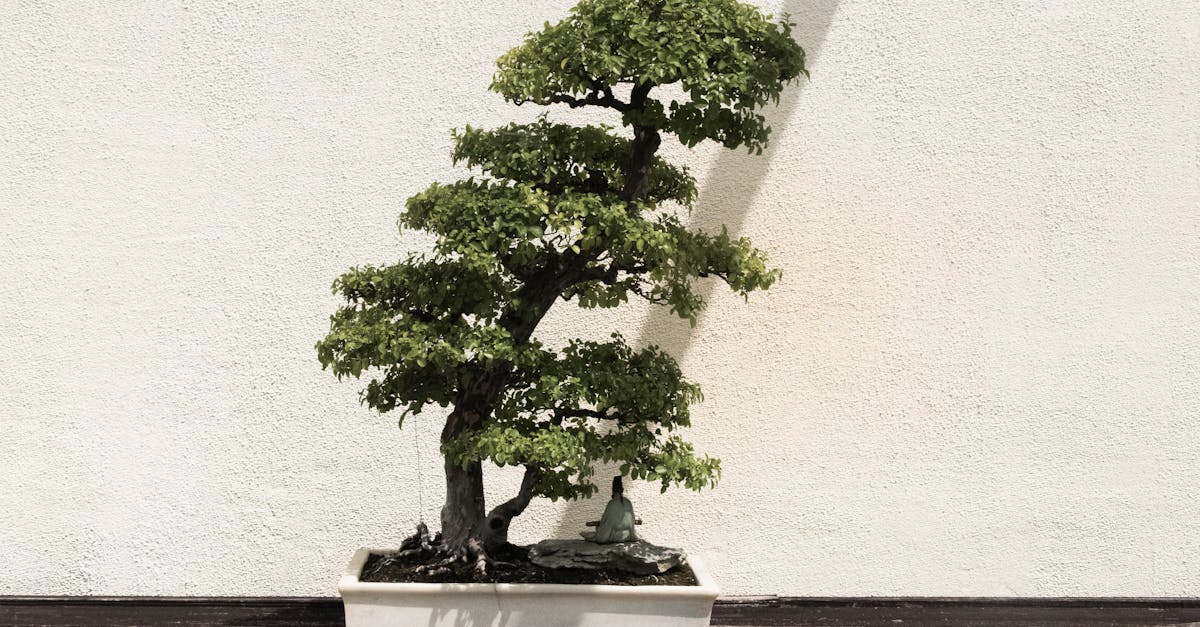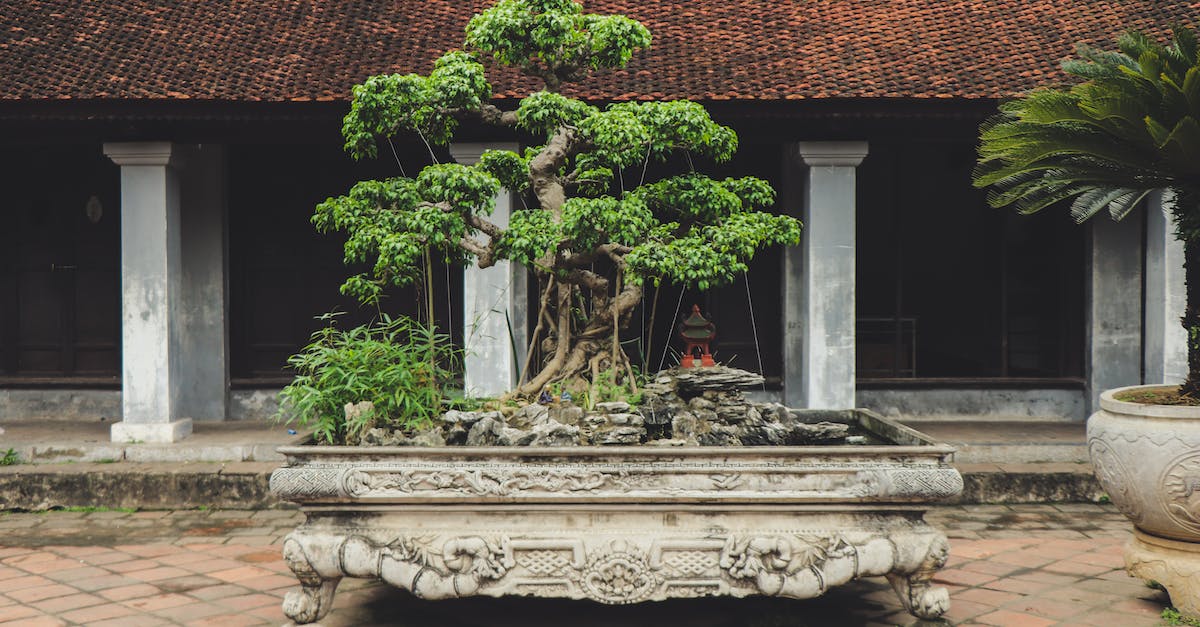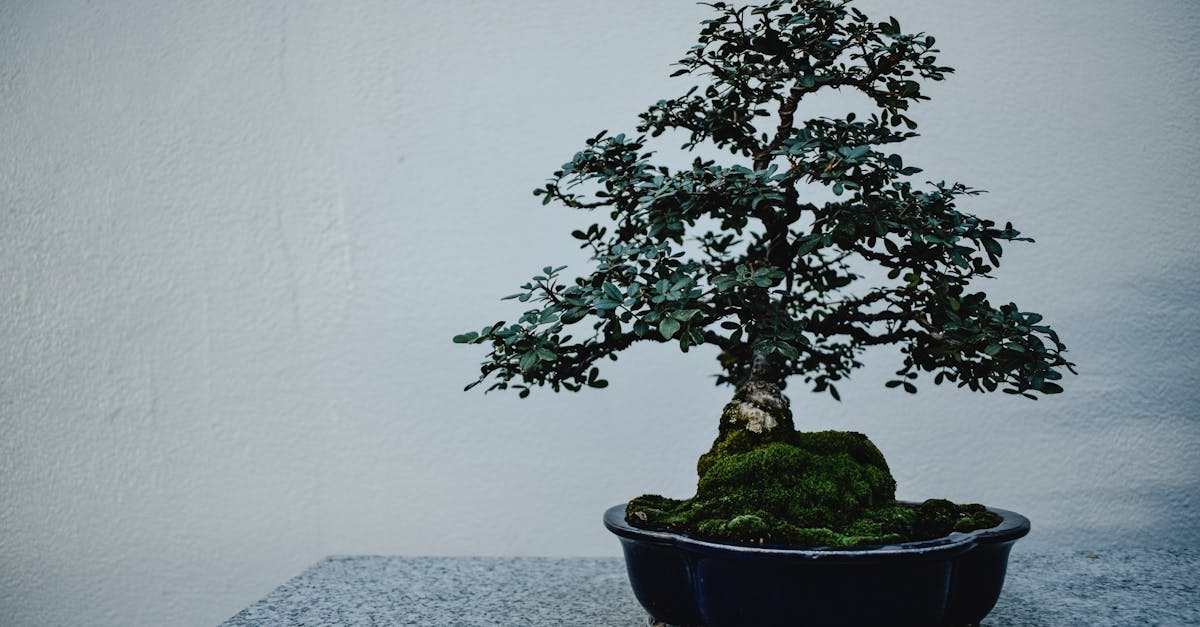Mastering the Art of Bonsai: A Comprehensive Guide to Cultivating and Shaping Miniature Trees

Growing and Shaping: A Journey into the Art of Bonsai
Bonsai, an ancient art form originating from China and refined in Japan, is a captivating practice that involves cultivating miniature trees in containers, carefully shaping them to mimic the majestic grandeur of nature in a condensed form. This comprehensive guide will delve into the captivating world of bonsai, empowering you with the knowledge and techniques to create and nurture these living masterpieces.
As we embark on this journey, you will uncover the historical roots and cultural significance of bonsai, gaining an appreciation for its artistic principles and the philosophy that underpins this practice. We will explore the essential aspects of selecting and caring for bonsai trees, ensuring their health and longevity, setting the stage for the intricate art of shaping and styling.
1. Introduction to Bonsai: Art and Cultivation
Introduction to Bonsai: Art and Cultivation
Bonsai, a captivating art form that originated in ancient China and was refined in Japan, is the practice of cultivating miniature trees in containers, meticulously shaping them to replicate the grandeur of nature in a condensed form. Bonsai enthusiasts strive to create living works of art that embody the principles of balance, harmony, and aesthetics, capturing the essence of nature’s beauty in a miniature scale.
Bonsai has a rich history steeped in cultural significance. Its roots can be traced back to the ancient Chinese practice of punsai, where trees and plants were dwarfed in containers for aesthetic appreciation. Over centuries, bonsai evolved into a refined art form in Japan, deeply intertwined with Zen Buddhism and the Japanese philosophy of wabi-sabi, which celebrates the beauty of imperfection and the acceptance of the natural cycle of life and death.
The aesthetics of bonsai are guided by specific principles that dictate the shape, proportion, and balance of the tree. Bonsai artists strive to create compositions that mimic the natural forms found in nature, capturing the essence of old, weathered trees with gnarled trunks, intricate branches, and lush foliage. They carefully consider the placement of each element within the composition, ensuring harmony and a sense of tranquility.
Historical Origins and Cultural Impact
Historical Origins and Cultural Impact
The origins of bonsai can be traced back to ancient China, where the practice of cultivating miniature trees and plants in containers, known as punsai, was popular during the Han Dynasty (206 BCE – 220 CE). These miniaturized landscapes were prized for their aesthetic beauty and were often used to decorate homes and temples. Over time, punsai evolved into a more refined art form, influenced by Taoist and Buddhist philosophies that emphasized harmony with nature and the acceptance of the natural cycle of life and death.
Bonsai’s journey to Japan began in the 6th century CE, where it was introduced by Buddhist monks who traveled to China to study Zen Buddhism. The Japanese were captivated by the art of bonsai and quickly adopted it, infusing it with their own cultural sensibilities and aesthetics. During the Heian period (794-1185 CE), bonsai became a popular pastime among the Japanese elite, and it was during this time that many of the fundamental principles and techniques of bonsai were developed.
Bonsai’s popularity continued to grow in Japan throughout the centuries, and it eventually became an integral part of Japanese culture. Bonsai trees were often displayed in tokonoma, special alcoves in traditional Japanese homes, and they were also used as decorations in temples and gardens. Bonsai also played a role in Japanese literature and art, and it was often depicted in paintings, scrolls, and other works of art.
Bonsai Aesthetics and Design Principles
Bonsai Aesthetics and Design Principles
The aesthetics of bonsai are guided by a set of fundamental principles that dictate the shape, proportion, and balance of the tree. These principles have been developed over centuries and are based on the observation of natural trees and the Japanese philosophy of wabi-sabi, which emphasizes the beauty of imperfection and the acceptance of the natural cycle of life and death.
One of the most important principles of bonsai design is shape. Bonsai trees are typically shaped to mimic the natural forms found in nature, such as upright, slanted, or cascading styles. The shape of the tree should be in harmony with the size and shape of the pot, and it should also complement the overall composition of the bonsai.
Proportion is another important principle of bonsai design. The different elements of the bonsai, such as the trunk, branches, and leaves, should be in proportion to each other. The trunk should be thick and sturdy, and the branches should be arranged in a balanced and harmonious manner. The leaves should be small and delicate, and they should not overwhelm the rest of the tree.
2. Selecting and Caring for Bonsai Trees
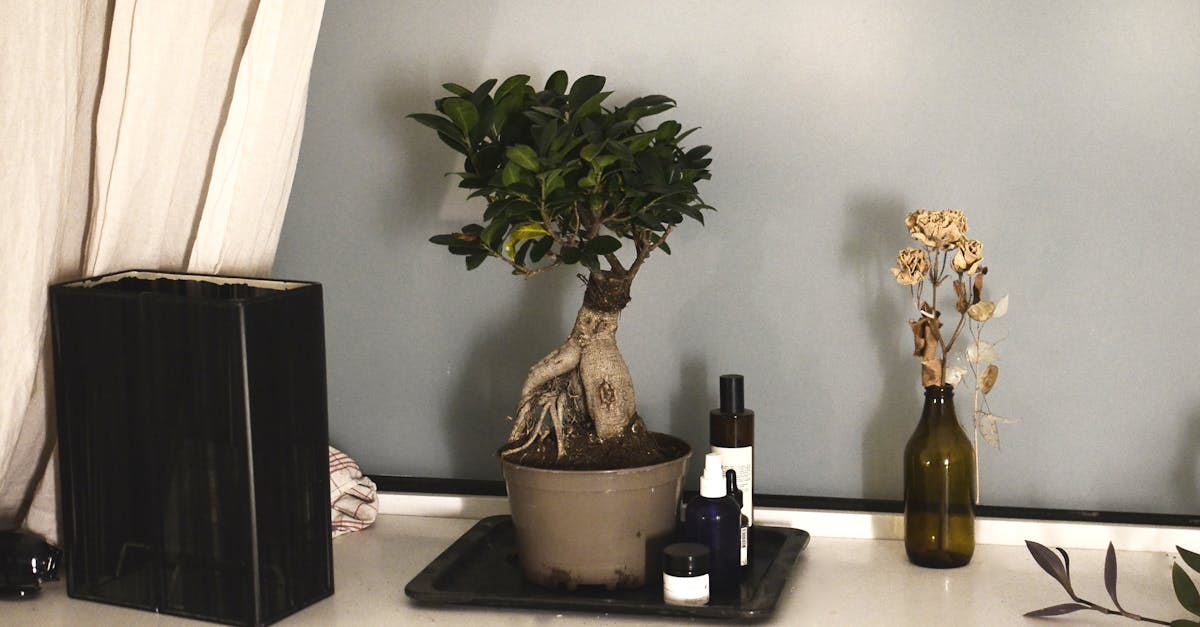
Selecting and Caring for Bonsai Trees
Selecting the right bonsai species is an important first step in the journey of bonsai cultivation. Different species have different growth habits, sizes, and tolerance to specific climates and growing conditions. It is important to choose a species that is well-suited to your climate and lifestyle.
Once you have selected a bonsai tree, you need to provide it with the optimal growing conditions to ensure its health and longevity. Bonsai trees need well-draining soil, plenty of sunlight, and regular watering. They also need to be fertilized regularly and repotted every few years to prevent the roots from becoming pot-bound.
In addition to providing the right growing conditions, you also need to perform essential care practices such as pruning, wiring, and shaping. Pruning helps to control the growth of the tree and create the desired shape. Wiring can be used to bend and shape the branches, and shaping techniques can be used to create the illusion of age and maturity.
Choosing the Right Bonsai Species
Choosing the Right Bonsai Species
Selecting the right bonsai species is essential for success in bonsai cultivation. Different species have different growth habits, sizes, and tolerance to specific climates and growing conditions. It is important to choose a species that is well-suited to your climate and lifestyle.
For beginners, it is often recommended to start with a species that is easy to care for and that can tolerate a wide range of growing conditions. Some popular beginner-friendly species include: – Chinese elm (Ulmus parvifolia) – Japanese maple (Acer palmatum) – Ficus – Juniper – Pine
Once you have gained some experience, you can then explore more challenging species. However, it is always important to do your research and to choose a species that is well-suited to your specific climate and growing conditions.
Creating and Maintaining Suitable Growing Conditions
Creating and Maintaining Suitable Growing Conditions
Bonsai trees need specific growing conditions to thrive. These conditions include:
Sunlight: Bonsai trees need plenty of sunlight to photosynthesize and produce food. However, too much sunlight can scorch the leaves, so it is important to find a balance. Most bonsai trees need at least six hours of sunlight per day.
Water: Bonsai trees need to be watered regularly, but it is important to avoid overwatering. Overwatering can lead to root rot, which can kill the tree. The best way to water a bonsai tree is to use a watering can with a narrow spout. Water the tree slowly and evenly, until the water begins to drain out of the bottom of the pot.
Soil: Bonsai trees need well-draining soil that is rich in organic matter. A good bonsai soil mix will contain a combination of akadama (a type of Japanese clay), pumice, and lava rock. You can also add a small amount of organic matter, such as compost or peat moss, to the soil mix.
Temperature: Bonsai trees prefer warm temperatures, but they can tolerate a wide range of temperatures. Most bonsai trees can survive in temperatures between 40°F and 90°F. However, it is important to protect your bonsai tree from extreme temperatures, such as freezing temperatures or high heat.
Essential Care Practices for Healthy Bonsai
Essential Care Practices for Healthy Bonsai
In addition to providing the right growing conditions, you also need to perform essential care practices to keep your bonsai tree healthy and thriving. These practices include:
Watering: Bonsai trees need to be watered regularly, but it is important to avoid overwatering. Overwatering can lead to root rot, which can kill the tree. The best way to water a bonsai tree is to use a watering can with a narrow spout. Water the tree slowly and evenly, until the water begins to drain out of the bottom of the pot.
Fertilizing: Bonsai trees need to be fertilized regularly to provide them with the nutrients they need to grow and thrive. A good bonsai fertilizer will contain a balanced ratio of nitrogen, phosphorus, and potassium. You can fertilize your bonsai tree every two to four weeks during the growing season.
Pruning: Pruning is an essential part of bonsai care. Pruning helps to control the growth of the tree and create the desired shape. You can prune your bonsai tree at any time of year, but it is best to prune during the dormant season when the tree is not actively growing.
Repotting: Bonsai trees need to be repotted every few years to prevent the roots from becoming pot-bound. Repotting also gives you an opportunity to check the roots of the tree and to make sure that the tree is healthy.
3. Shaping and Styling Bonsai: Techniques and Tools
Shaping and Styling Bonsai: Techniques and Tools
Once you have mastered the basics of bonsai care, you can start to learn about the different shaping and styling techniques that can be used to create unique and beautiful bonsai trees. Some of the most common shaping and styling techniques include:
Pruning: Pruning is the most basic shaping technique. It involves removing branches and leaves to control the growth of the tree and create the desired shape. Pruning can be done at any time of year, but it is best to prune during the dormant season when the tree is not actively growing.
Wiring: Wiring is a technique that can be used to bend and shape the branches of a bonsai tree. Wires are wrapped around the branches and then tightened to gradually bend the branch into the desired shape. Wiring can be used to create curves, bends, and other shapes in the branches.
Bending: Bending is a technique that is similar to wiring, but it does not involve the use of wires. Instead, the branches are bent by hand. Bending can be used to create gentle curves and bends in the branches.
In addition to these basic techniques, there are many other shaping and styling techniques that can be used to create unique and beautiful bonsai trees. These techniques include:
-
Grafting: Grafting is a technique that can be used to join two or more plants together. This technique can be used to create unique shapes and forms in bonsai trees.
-
Jin and shari: Jin and shari are techniques that are used to create the illusion of age and maturity in bonsai trees. Jin is the art of creating deadwood on a bonsai tree, while shari is the art of creating exposed roots.
-
Root-over-rock: Root-over-rock is a technique that involves growing a bonsai tree over a rock. This technique can create a dramatic and visually appealing bonsai.
Pruning Techniques for Bonsai Shaping
Pruning Techniques for Bonsai Shaping
Pruning is one of the most important shaping techniques used in bonsai. It involves removing branches and leaves to control the growth of the tree and create the desired shape. There are many different pruning techniques that can be used, each with its own specific purpose.
Pinching: Pinching is a technique that is used to remove the growing tips of branches. This technique is often used to control the growth of the tree and to encourage the development of new branches. Pinching can be done at any time of year, but it is best to pinch during the growing season when the tree is actively growing.
Cutting: Cutting is a technique that is used to remove entire branches. This technique is often used to remove branches that are too long or that are growing in the wrong direction. Cutting can also be used to create specific shapes in the tree. Cutting should be done during the dormant season when the tree is not actively growing.
Defoliation: Defoliation is a technique that involves removing all of the leaves from the tree. Defoliation can be used to stimulate new growth and to create a more compact tree. Defoliation can also be used to create specific shapes in the tree. Defoliation is only used in certain bonsai styles, and is not good for all species of trees. Defoliation should never be done more than once a year.
Wiring Techniques for Bonsai Styling
Wiring Techniques for Bonsai Styling
Wiring is a technique that can be used to bend and shape the branches and trunks of bonsai trees. Wires are wrapped around the branches and then tightened to gradually bend the branch into the desired shape. Wiring can be used to create curves, bends, and other shapes in the branches. It can also be used to correct structural problems in the tree, such as leaning or twisted branches.
There are many different types of wire that can be used for bonsai wiring. The most common type of wire is aluminum wire. Aluminum wire is strong and flexible, and it is easy to work with. Other types of wire that can be used for bonsai wiring include copper wire and stainless steel wire. Copper wire is more durable than aluminum wire, but it is also more difficult to work with. Stainless steel wire is the most durable type of wire, but it is also the most difficult to work with.
When wiring a bonsai tree, it is important to use the correct wire gauge. The wire gauge refers to the thickness of the wire. The thicker the wire, the stronger it will be. However, thicker wire is also more difficult to work with. For most bonsai trees, a wire gauge of 20-22 is a good choice.
Essential Tools for Bonsai Shaping and Styling
Essential Tools for Bonsai Shaping and Styling
In addition to the basic tools that are used for general gardening, there are a number of specialized tools that are used for bonsai shaping and styling. These tools are designed to help you to create and maintain the desired shape of your bonsai tree. Some of the most essential bonsai tools include:
-
Bonsai scissors: Bonsai scissors are small, sharp scissors that are used to trim and shape the leaves and branches of bonsai trees. Bonsai scissors come in a variety of sizes and shapes, so you can choose the right pair for your specific needs.
-
Bonsai pliers: Bonsai pliers are small, long-nosed pliers that are used to bend and shape the branches of bonsai trees. Bonsai pliers come in a variety of sizes and shapes, so you can choose the right pair for your specific needs.
-
Bonsai wire: Bonsai wire is a thin, flexible wire that is used to hold the branches of bonsai trees in place while they are being shaped. Bonsai wire comes in a variety of gauges, so you can choose the right thickness for your specific needs.
-
Bonsai root hook: A bonsai root hook is a small, hooked tool that is used to remove soil from around the roots of bonsai trees. Bonsai root hooks come in a variety of sizes and shapes, so you can choose the right one for your specific needs.
-
Bonsai repotting tools: Bonsai repotting tools are a set of specialized tools that are used to repot bonsai trees. Bonsai repotting tools include a repotting trowel, a root rake, and a soil scoop. Bonsai repotting tools come in a variety of sizes and shapes, so you can choose the right set for your specific needs.
4. Advanced Styling Techniques for Bonsai

Advanced Styling Techniques for Bonsai
Once you have mastered the basics of bonsai shaping and styling, you can start to learn about the more advanced techniques that can be used to create unique and beautiful bonsai trees. Some of the most common advanced styling techniques include:
Grafting: Grafting is a technique that can be used to join two or more plants together. This technique is used to create unique shapes and forms in bonsai trees. You can graft different species of trees together, or you can graft different varieties of the same species together. Grafting is a difficult technique to master, but it can be very rewarding.
Jin and shari: Jin and shari are techniques that are used to create the illusion of age and maturity in bonsai trees. Jin is the art of creating deadwood on a bonsai tree, while shari is the art of creating exposed roots. Jin and shari can be used to create a variety of different effects. You can create dramatic and eye-catching jin and shari, or you can create more subtle and realistic effects.
Root-over-rock: Root-over-rock is a technique that involves growing a bonsai tree over a rock. This technique can create a dramatic and visually appealing bonsai. Root-over-rock is a challenging technique to master, but it can be very rewarding. Not all tree species are suited to the root-over-rock technique, and these techniques do take time and patience to master.
Grafting Techniques for Bonsai
Grafting Techniques for Bonsai
Grafting is a technique that can be used to join two or more plants together. This technique is used to create unique forms and combinations of species in bonsai trees. There are many different grafting methods that can be used, each with its own specific advantages and disadvantages.
One of the most common grafting methods used in bonsai is the approach graft. This method involves bringing two branches from different trees together and then wounding the cambium layers of each branch. The cambium layer is the layer of tissue that produces new growth, so wounding this layer encourages the two branches to fuse together. The approach graft is a relatively simple technique to perform, and it is successful with a wide variety of tree species.
Another common grafting method used in bonsai is the cleft graft. This method involves splitting the rootstock (the tree that will be supporting the graft) and then inserting a scion (the branch that will be grafted onto the rootstock) into the split. The cleft graft is a more difficult technique to perform than the approach graft, but it is also more successful with some tree species.
Grafting can be used to create a variety of different effects in bonsai trees. You can graft different species of trees together to create unique forms and combinations of foliage. You can also graft different varieties of the same species together to create trees with different characteristics, such as different flower colors or fruit.
Creating Jin and Shari: Exposed Wood Techniques
Creating Jin and Shari: Exposed Wood Techniques
Jin and shari are techniques that are used to create the illusion of age and maturity in bonsai trees. Jin is the art of creating deadwood on a bonsai tree, while shari is the art of creating exposed roots. Jin and shari can be used to create a variety of different effects. You can create dramatic and eye-catching jin and shari, or you can create more subtle and realistic effects. Creating jin and shari is a relatively advanced technique, but it can be very rewarding.
To create jin, you will need to remove the bark from a branch or trunk. You can use a sharp knife or a chisel to do this. Once you have removed the bark, you will need to allow the wood to dry out. This can take several weeks or even months. Once the wood is dry, you can use a wire brush or a sandpaper to remove any remaining bark or cambium. You can then use a sealant to protect the jin from rot and decay.
To create shari, you will need to remove the soil from around the roots of the tree. You can use a water hose or a root hook to do this. Once you have removed the soil, you will need to allow the roots to dry out. This can take several days or even weeks. Once the roots are dry, you can use a wire brush or a sandpaper to remove any remaining soil or debris. You can then use a sealant to protect the shari from rot and decay.
Root-over-Rock Bonsai: A Unique Styling Form
Root-over-Rock Bonsai: A Unique Styling Form
Root-over-rock is a unique bonsai styling technique that involves growing a bonsai tree over a rock. This technique can create a dramatic and visually appealing bonsai. Root-over-rock bonsai are often used to represent landscapes, with the rock representing a mountain or a cliff. Creating a root-over-rock bonsai is a challenging technique, but it can be very rewarding.
To create a root-over-rock bonsai, you will need to start with a young tree. The tree should be small enough to fit on the rock, and it should have flexible roots. You will also need to choose a rock that is the right size and shape for the tree. The rock should be porous enough to allow the roots of the tree to penetrate it.
Once you have selected the tree and the rock, you will need to plant the tree on the rock. You can use soil or a bonsai substrate to secure the tree to the rock. Once the tree is planted, you will need to train the roots to grow over the rock. You can do this by using wire or by carefully bending the roots. Training the roots to grow over the rock can take several years.
5. Maintaining and Displaying Bonsai: Care and Appreciation
Maintaining and Displaying Bonsai: Care and Appreciation
Once you have created a bonsai tree, you will need to provide ongoing care and maintenance to keep it healthy and looking its best. Bonsai trees need regular watering, fertilizing, and pruning. They also need to be repotted every few years to prevent the roots from becoming pot-bound.
In addition to providing basic care, you can also use a variety of techniques to display your bonsai tree to showcase its beauty and enhance its surroundings. One popular technique is to use a bonsai stand. Bonsai stands are available in a variety of styles and materials, and they can be used to elevate the bonsai tree and draw attention to it.
Another popular technique for displaying bonsai trees is to use a tokonoma. A tokonoma is a special alcove in a traditional Japanese home that is used to display works of art. Bonsai trees are often displayed in tokonoma, as they are considered to be works of art in their own right. Bonsai trees can also be displayed in other locations, such as on a table or in a windowsill. When choosing a location to display your bonsai tree, it is important to consider the amount of light that the tree will receive.
Ongoing Care and Maintenance for Healthy Bonsai
Ongoing Care and Maintenance for Healthy Bonsai
Once you have created a bonsai tree, you will need to provide ongoing care and maintenance to keep it healthy and looking its best. Regular care practices include watering, fertilizing, pest and disease management, and seasonal considerations.
Watering: Bonsai trees need regular watering, but it is important to avoid overwatering. The best way to water a bonsai tree is to use a watering can with a narrow spout. Water the tree slowly and evenly, until the water begins to drain out of the bottom of the pot. Allow the soil to dry out slightly between watering.
Fertilizing: Bonsai trees need to be fertilized regularly to provide them with the nutrients they need to grow and thrive. A good bonsai fertilizer will contain a balanced ratio of nitrogen, phosphorus, and potassium. You can fertilize your bonsai tree every two to four weeks during the growing season.
Pest and disease management: Bonsai trees are susceptible to a variety of pests and diseases. It is important to inspect your bonsai tree regularly for signs of pests or diseases. If you find any pests or diseases, you should treat them immediately.
Displaying Bonsai for Optimal Appreciation
Displaying Bonsai for Optimal Appreciation
In addition to providing proper care, the way in which a bonsai is displayed can greatly enhance its visual appeal and cultural significance. There are several traditional and contemporary display techniques that can be employed to showcase the unique characteristics of each bonsai.
Stands: Bonsai stands are elevated platforms that serve to raise the bonsai and draw attention to its form and details. They come in various designs, from simple and functional to elaborate and ornate. The choice of stand should complement the style and size of the bonsai, as well as the overall aesthetic of the display.
Scrolls: Scrolls, or kakejiku in Japanese, are vertical banners that are often used as a backdrop for bonsai displays. They typically feature calligraphy or paintings that evoke the natural world, such as landscapes, mountains, or flowers. The scroll not only provides a visually pleasing background but also adds a sense of depth and context to the display.
Tokonoma: A tokonoma is a dedicated alcove in a traditional Japanese home, specifically designed for displaying works of art, including bonsai. It is typically located in the main reception room and is treated with great respect. When a bonsai is placed in a tokonoma, it becomes the focal point of the room, inviting contemplation and appreciation of its beauty and symbolism.
Additional Resources for Bonsai Enthusiasts
Additional Resources for Bonsai Enthusiasts
For those wishing to further their exploration of the art of bonsai, there are numerous valuable resources available. Books, websites, and organizations dedicated to bonsai provide a wealth of information, inspiration, and opportunities for community engagement.
Books: – Bonsai: The Complete Guide to Care and Cultivation by Peter Chan is a comprehensive guide that covers all aspects of bonsai cultivation, from selecting and shaping trees to ongoing care and maintenance. – The Bonsai Bible by Tony Tickle is another excellent resource, featuring detailed instructions and inspiring photography that make it suitable for both beginners and experienced enthusiasts. – Japanese Bonsai Techniques I and Japanese Bonsai Techniques II by John Yoshio Naka are classic works that provide insights into the traditional techniques and aesthetics of Japanese bonsai.
Websites: – Bonsai Empire (https://www.bonsaiempire.com/) is a popular online resource that offers a wide range of articles, tutorials, and forums dedicated to all aspects of bonsai. – International Bonsai Arboretum (https://www.bonsai-arboretum.com/) is a non-profit organization that promotes the art of bonsai through exhibitions, workshops, and educational programs. – American Bonsai Society (https://www.bonsai-bci.com/) is the largest bonsai organization in the United States, providing resources, events, and a community for bonsai enthusiasts.
What is the best type of tree for beginners to use for bonsai?
Good choices for beginners include juniper, Chinese elm, ficus, and Japanese maple, as they are relatively easy to care for and can tolerate mistakes.
How often should I water my bonsai tree?
Water your bonsai tree when the soil feels dry to the touch. Avoid overwatering, as this can lead to root rot.
How often should I fertilize my bonsai tree?
Fertilize your bonsai tree every two to four weeks during the growing season. Use a balanced bonsai fertilizer.
How do I prune my bonsai tree?
Prune your bonsai tree to control its growth and shape. Use sharp, clean shears to make precise cuts.
How do I repot my bonsai tree?
Repot your bonsai tree every two to three years to prevent the roots from becoming pot-bound. Use a well-draining bonsai soil mix.


